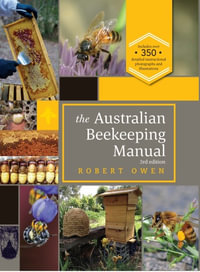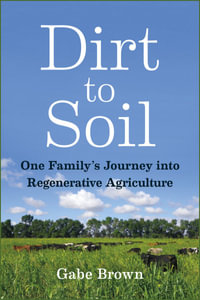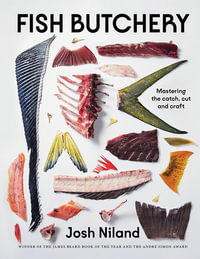Foreword; Preface; Acknowledgments Chapter 1: The Origin and Evolution of Gossypium 1. Introduction, 2. Emergence and Diversification of The Cotton Tribe, 3. Emergence and Diversification of the Cotton Genus, 4. Biogeography and Speciation, 5. Domestication of the Cultivated Cottons, 6. Summary, 7. Acknowledgments Chapter 2: Germplasm Resources for Physiological Research and Development 1. Introduction, 2. Germplasm Collections, 3. Diversity Within, 4. Diversity in the Germplasm Collections, 5. Summary Chapter 3: Morphological Alterations in Response to Management and Environment 1. Introduction, 2. Early Growth Events, 3. Temperature, 4. Water, 5. Nitrogen, 6. Growth Regulators, 7. Ozone, 8. Summary Chapter 4: Physiological and Anatomical Factors Determining Fiber Structure and Utility 1. Introduction, 2. Overview of Fiber Development, 3. Fineness, 4. Length, 5. Maturity. 6. Strength, 7. Uniformity, 8. Yield, 9. Attempts to Modify Fiber Properties, 10. Acknowledgments Chapter 5: Germination and Seedling Development 1. Introduction, 2. Physiology of Germinating Cotton Seeds, 3. Temperature, 4. Water, Light and Cotton Seedling Physiology, 5. Impacts of Tillage and other Soil Factors on Cotton Seedling Emergence, 6. Seedling Disease Complex and other Biotic Stress Factors that affect Cotton Seedling Emergence, 7. Summary, Chapter 6: Growth and Development of Root Systems 1. Introduction, 2. Anatomy of Cotton Roots, 3. Development of the Cotton Root System, 4. Factors Affecting Cotton Root Growth, 5. Enhancement of Cotton Root Growth, 6. Methodology of Root Investigations, 7. Conclusions and Future Directions Chapter 7: Temporal Dynamics of Cotton Leaves And Canopies 1. Introduction, 2. Plant-crop Morphology, 3. Leaf Morphology, 4. Light Interception, 5. Photosynthetic Light Response, 6. Photosynthesis Pattern with Leaf Age, 7. Carbon Budget - Leaf, 8. Carbon Budget - Boll, 9. Significance for Management of Cotton, 10. Summary Chapter 8: Cotton Source/Sink Relationships 1. Introduction, 2. The Source, 3. The Sinks, 4. Summary Chapter 9: Relation of Growth and Development to Mineral Nutrition 1. Introduction, 2. Essential Nutrients. 3. Nutrient Uptake and Distribution, 4. Effects of Cultivars on Nutrient Uptake, 5. Boll Load/nutrient Status on Uptake and Distribution, 6. Summary Chapter 10: Cycles and Rhythms In Cotton 1. Introduction to Biological Rhythms, 2. Biological Rhythms in Cotton, 3. Future Directions Chapter 11: Physiology of Seed and Fiber Development 1. Introduction, 2. Fiber Initiation, 3., 4. Hormones and Embryo Development, 5. Conclusion Chapter 12: Plant Responses to Temperature Extremes 1. Introduction, 2. Temperature Measurements, 3. Temperature Responses of Cotton Metabolism, 4. Summary Chapter 13: Plant Responses to Salinity 1. Introduction, 2. Specific Examples of Salinity Problems, 3. Plant Responses to Salinity, 4. Boll Yield and Fiber Quality, 5. Physiology, 6. Irrigation, 7. Other Environmental Factors, 8. Novel Sources of Salt Resistance For Breeding, 9. Summary, 10. Acknowledgements Chapter 14: Plant Responses to Mineral Deficiencies and Toxicities 1. Introduction, 2. Nitrogen Deficiency, 3. Phosphorus Deficiency, 4. Potassium Deficiency, 5. Calcium Deficiency, 6. Magnesium Deficiency, 7. Sulfur Deficiency, 8. Manganese Deficiency, 9. Zinc Deficiency, 10. Copper Deficiency, 10. Iron Deficiency, 12. Boron Deficiency, 13. Molybdenum Deficiency, 14. Toxicity, 15. Summary Chapter 15: Air Pollution Stress 1. Introduction, 2. Plant Exposure Techniques, 3. Ozone, 4. Sulfur Dioxide, 5. Summary Chapter 16: Responses of Cotton to C
Industry Reviews
From the reviews:
"Physiology of Cotton is well organized into 35 chapters, addressing topics ranging from the origin of cotton to genetic engineering applications in cotton improvement. Chapter contributors explain the concepts of cotton physiology through illustrations, graphs, and equations. ... will serve as a useful reference for researchers and faculty who will train the next generation of scientists challenged with meeting the fiber needs of a growing population. ... Summing Up: Recommended. Upper-division undergraduate through professional collections." (V. G. Kakani, Choice, Vol. 47 (11), July, 2010)
























